All of us are so used to hearing how the wheel’s invention changed human civilization once and for all. However, there isn’t much discussion about a crucial part of that entire wheel and axle system— the brakes.
I have noticed the same bent among drivers when they talk about vehicles. They will go at length to talk about the engine, transmission, and suspension. But they seldom talk about brakes.
All this brake-excluding talk about vehicles has pushed me to jot down this article. Here, I will only talk about air brake systems in great detail including preventive maintenance in your fleet
All those folks who rely on brakes instead of louder horns should hang around as I walk you through this primer on air brake systems.
The Invention and History of Air Brakes
Before getting into the mechanism of air brakes, I would like to provide a brief look at its invention and history. Like many other inventions, the air brakes found in road vehicles were originally designed for trains.
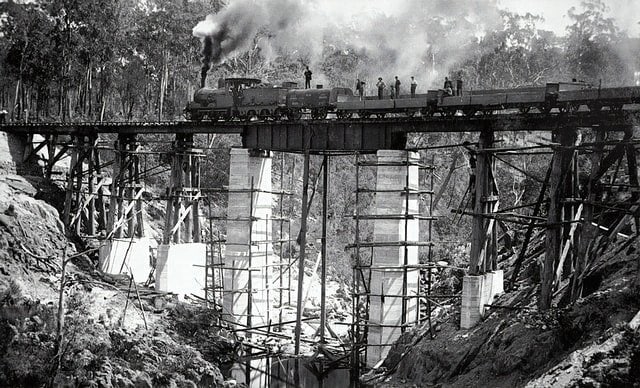
The Era of Brakemen
During the first half of the 19th century, trains would feature handbrakes in every carriage. The driver would blow a whistle in a certain rhythm to notify “brakemen,” causing them to move between carriages and pull handbrakes. You can easily piece together that this method of stopping a multi-carriage vehicle was quite tedious. You can’t apply such brakes in emergencies and without a platoon of brakemen.
Gladhand-Based Braking — The First Form of Air Brakes
The brakemen era was followed by the gladhand-based braking system. We can consider it a proto-model for the contemporary air brake systems. This system consisted of a brake pipe running across the length of the train and depended on interlocking hoses that passed pressurized air called gladhands. This brake pipe would use gladhands as connectors between the carriages.
The brake pipe in gladhand braking would connect to an air cylinder on every carriage. The cylinder would use the pressurized air current to pull the handbrake chain. This braking system’s arrival ruled out the need for brakemen to run around on the train.
Despite this evolution, applying the brakes remained time-consuming. Besides this, one wobbly gladhand connection could cause the entire braking system to fail.

George Westinghouse— Our Hero
The story of how air brake systems came to be has a protagonist, and his name is George Westinghouse. After seeing the inefficiency and shortcomings of handbrake and gladhand-based systems, Westinghouse started working on a prototype that would later become the basis for the modern air brake systems.
After many trials and errors, he eventually succeeded in making a triple-valve air braking system. This system inverted the behavior of the direct air brake and showed better responsiveness and fail-safeness than its predecessors.
Westinghouse’s triple-valve system was better than the gladhand-based braking because the entire air volume present in it you didn’t have to be moved. The triple value got activated on pressing down the brake paddle. Westinghouse kept on introducing improvements to his propriety triple-valve air braking system in later years.
Air Brake Systems on Roads
Carl Benz invented the first road vehicle in 1885-86. For nearly the next 15 years, car drivers would use wooden block brakes to stop their vehicles. This braking system consisted of a lever connected to a heavy wooden chunk.
When people needed to stop their vehicles, they would pull the lever to lower the block on the wheels. The blocks would grind against the wheels and eventually put them to a halt. In 1902, French engineer Louis Renault (yes, THAT Renault) designed drum brakes to replace the wooden blocks.
The air brake systems were introduced to cars 37 years after the invention of the first road vehicle. The credit for this feat goes to a German company called Knorr-Bremse. The company used to make pneumatic brakes for railway vehicles and launched a version for road vehicles in 1922.
The company designed an air braking system that would apply brakes to all four wheels of the vehicle at the same time. This simultaneous braking significantly cut down the braking distances and improved road safety. In the next three decades, the air brake system would become standard among all heavy vehicles.
All the newly made heavy vehicles would come fitted with air brakes, from tractors to trailers and trucks to buses.
The Improvement in Air Braking System
As the air brake system became common in road vehicles, automotive companies all over the world kept on working to improve them. The anti-lock braking system came out of that great collective effort. This braking system consists of an overriding mechanism that would prevent the vehicle from locking up under harsh braking conditions. The anti-lock braking system became a standard in the late 70s.
As the automotive industry was rounding of the 20th century, Mercedes-Benz introduced the first electronic braking system. The system used compressed air for braking. However, an electronic control unit is in charge of compression instead of a mechanical or manual bar.
Air Brake Components and Parts
Air brake systems are intricate networks of various mechanical parts and components. It won’t be wrong to say that an air brake system is as good as any individual component. Here, we are going to have a rundown of all those components. This information will come handy in our discussion on the workings of air brake systems, their inspection, and preventive maintenance measures. The list will include the components of both drum and disc brakes.
· Storage Tanks
Storage tanks are the reservoirs that collect the compressed air and keep it stored until the driver actuates the braking system.
· Compressors
It is a small compressor powered by the vehicle’s engine that provides pressurized air to storage tanks/reservoirs.
· Compressor Governor/Regulator
It regulates the air compressor’s cut-in and cut-out points to maintain a prescribed amount of pressurized air in the tanks.
· Brake Pedal/Foot Value
When pushed, it releases the compressed air from the storage tanks.
· Brake Chambers
These are small cylinders connected to all four wheels. They feature a slack adjuster that actuates the cam mechanism.
· Pushrod
It is a piston-shaped steel rod that connects the brake chamber with the slake adjuster.
· Slack Adjuster
Slack adjuster is an arm that connects the pushrod to the brake s-cam. The adjuster translates the pushrod force to the S-cam with minimal losses.
· Cam
Cam is a heavy metal component consists of a camshaft and an S-shaped head (hence called S-cam). Its head pushes the brake shoe against the brake drum and moves it away as well.
· Brake Shoe
It is a lined component of steel that generates friction when pushed against the brake drum.
· Return Spring
It is a sturdy spring that moves the brake shoe to its open position when the S-cam is not pushing it.
· Brake Pads
Brake pads are made of top-quality rubber with steel backing plates. They come in contact with a moving rotor to stop it through friction.
· Caliper
Caliper is a housing that holds the pair of breaking pads together and pushes them against the rotor.
· Guide Pins
Each brake caliper uses two metal pins to ensure the proper gliding angle for brake pads to meet the rotor.
Upsides and Downsides of Air Brake Systems
No manmade thing is just about all its benefits. We come to know about their unintended downsides and harms over some time. There is no doubt that air brake systems are the best when it comes to stopping down multi-feet vehicles with massive engines and momentous load.
It’s been around 100 years since the introduction of pneumatic brakes in road vehicles. Despite all the development and technology, we haven’t made any viable substitute for air braking systems. Notwithstanding this prolific track record, air brake systems also have some intrinsic flaws and issues.
To make sure I don’t sound like an air brake salesman, I will list down both its upsides and downsides.
| Upsides of Air Brake Systems |
Downsides of Air Brake System |
| The hydraulic system of the same configuration and price points can’t match the stopping power that air brake systems provide. |
The extended compressibility of air means you need a huge amount of air to move to the brake chambers for slowing down the vehicle. This results in longer stopping distances. You also need to sit tight and attentive when brakes involve stretched out stopping distance. |
| The majority of hydraulic brake failures occur due to brake fluid leakage. Air brakes don’t fail suddenly even if there is a minor leak due to air’s compressible nature. You can execute less efficient air braking even in worst-case failures, which is unimaginable in any other braking system.
|
Air used in the braking system is susceptible to freezing in low temperatures. When air freezes or condensed, it can result in brake failure. For that reason, some air brake systems use alcohol evaporators. The traces of alcohol in the air prevent icing in the freezing temperatures. |
|
Air doesn’t corrode the brake’s metal components, thus, extends the operating life of the entire setup.
|
Air brakes produce loud squeals and hisses. The air brake system would have offered the same utility without those sounds. This noise is surely not a functional drawback but looks like one when we see the completely silent hydraulic brakes. |
How Do Air Brakes Work?
You are truck a driver cruising your loaded vehicle weighing 60,000 pounds at a highway. You notice traffic congestion a few hundred feet ahead. You put your foot on the brake pedal and gradually start pressing it down. As you push the pedal down, the truck starts slowing down and comes to a grinding halt right before the next vehicle in the lane.
As the truck tires end their final revolution, you hear a hissing sound coming from below the drivetrain. You have managed to stop tons of moving load just with the extension of your foot. Besides your steady foot on the pedal, the credit goes to your vehicle’s air braking system.
The mechanism of air brakes involves a lot of physics and thermodynamic principles. However, I will try to explain air braking while steering clear of all the scientific jargon.
The Basic Principle of Air Brake Systems
Like Westinghouse’s three-valve braking systems, modern air brake systems for heavy-duty vehicles also follow the same three-tier principle. This includes: charging, applying, and releasing.
- Charge:The brake system must be “charged” with compressed air before you apply the brakes.
- Apply:When you apply the brakes, the air pressure decreases in the system, and a valve lets the air back in the storage tanks.
- Release:The application of brakes results in air release and pressure drop. On the one hand, this step ensures the stoppage of tires. On the other hand, it refills the storage/supply tank for the next round of braking.
From the above explanation, it seems like an air brake takes ages to get activated and put friction on tires. However, all of it takes a couple of seconds on the road.
Air Brakes with Drums and Discs
You can classify air brake systems in two categories based on the component they use to stop the moving tire: Drum brakes and disc brakes. The core principle in both drum and disc air brakes remain the same. Both feature engine-mounted compressors that fill the air storage tanks with compressed air and use the same application and release mechanisms mentioned above.
But to avoid any confusion, I will break down the working of both drum and disc air brakes separately.
Working of Drum Brakes
Let’s suppose you are driving a truck and applies its pneumatic brakes. You press the brake pedal and then release it after a couple of seconds. What happens in those few seconds beneath your vehicle’s platform? Let’s find out.
As you press the brake pedal, you activate the air braking system of your vehicle. This activation then sets off a cascade of actions and reactions that eventually make your vehicle come to a grinding halt.
- The reservoirs pass through the compressed air to the brake valves.
- The valves then transmit the air to the brake chambers.
- The chambers press the pushrods to push them on the slack adjusters.
- The adjusters act as force transmitters. They transfer the force coming from the pushrod to the cams’ rotational force.
- The cam rotation causes the rollers to rise and push the shoes against the drum.
- The shoe lining makes contact with the drum coupled with the moving wheel.
- The shoe’s rubbing action that slows down drum rotation also stops the coupling wheel.
As you move away your foot from the brake pedal, all these actions take place.
- The delivered air exhausts and actuates the shoe spring.
- The spring pushes back the shoe pressed against the drum.
- As the shoe comes to its original position, the cam also rotates back to its original position.
- Consequently, slake adjusters are also released.
Now, all the components of your braking system have come back to their original position and are ready for the next round of braking.
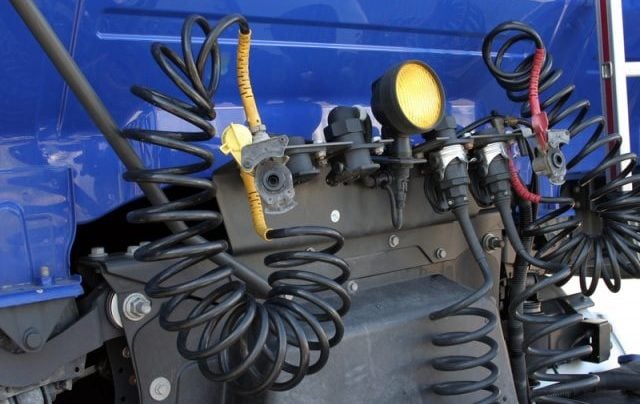
Working of Disc Brakes
The first two steps of disc brakes are the same, i.e., compressed air going to brake valves and then to the brake chambers. From there, disc brakes work slightly differently than drum brakes.
- The activated brake chambers set off the caliper.
- The caliper transfers the force of compressed air to the inner brake pad.
- Then, two things happen in quick succession: the caliper slides on the guide pins, and the inner brake pad come in contact with the brake rotor.
- This pressing contact between the pad and rotor slows down the latter to decelerate the wheels.
- As you release the brake pedal, the return spring pushes the caliper back to its original (non-activated) position.
- This results in the separation of brake pads from the brake disc/rotor.
Air Brake Inspection and Preventive Maintenance
Air brakes can work with the same efficiency as day one for decades if you are proactive with their maintenance. As a 63-year old folk who have been fiddling with all sorts of road vehicles from the age of 12, trust me when I say inspection and preventive maintenance guarantee that you don’t have to replace your braking system for the lifetime of the vehicle.
After inspecting and maintaining air brakes for years and years, I have devised this inspection and preventive maintenance module for air brakes. You can appraise your braking system like an expert by using the method. All you need is a set of wheel chocks and a timer to carry out this inspection.
Check the Low-Air Warning
Your brake system must maintain pressure above 55psi. When the pressure drops down from there, the law-air warning indicator in the odometer or the dashboard starts blipping. A low-air warning indicates a huge leakage or failure of the compressor.
By the way, the ideal air pressure for any vehicle braking system is 90psi.
Check Air Pressure Build-up
You do this test to check the air compressor. Rev up the engine between 600-900rpm. Lower the air pressure to 85psi by pushing down the brake paddle. Now, set your eyes on the pressure gauge. The air pressure should get back to its original value within 100-120 seconds with an optimally working compressor.
Check Compressor Governor Cut-out and Cut-in
This test makes sure the compressor governor is regulating the compressed air with precise cut-ins and cut-outs. Rev up the engine and let the brake pressure build-up. Keep your eyes on the gauge and ears on the hissing sound. If your brakes hiss at any value between 100 and 145psi, your brake governor is cutting out the air pressure at the right value. The right cut-out is essential to prevent pressure build-up and subsequent damages in the brake chambers.
For the cut-in test, press down the paddle to lower down the pressure to 25psi. Then monitor the gauge needle. If it starts moving up and reaches 80psi, it means the compressor governor is pushing the compressed air to the tank and creating the required braking pressure.
If the governor is not cutting in and out of the compressed air for the right pressures, you need to go to the brake specialists instead of driving the vehicle as-is. A faulty governor doesn’t result in brakes’ complete failure, but it can significantly cut down its efficiency.
Check Air Valves
Inspect all air/brake valves of the system for leaks. You can use soap water with a spray bottle to identify them. If you stumble upon a leak creating large bubbles, you need to replace the given valve as soon as possible.
Check Brake Lining
Inspect the lining of brake shoes and pads for wear and tear and accumulation of oil, grease, and mud. If it has excessively worn out or the build-up has baked on its surface, you need to replace the lining.
Lubricate Slack Adjusters
Lubricate slack adjusters when you lubricate the vehicle chassis. You need to do it every three months or after completing 5,000 miles.
Summary
I guess it is enough for now on air brake systems. If you own and manage heavy vehicles, I hope that this article has helped you know more about one critical part found in those sturdy drivetrains. If you are maintaining a fleet of heavy-duty vehicles, hit us up if you are looking to streamline its maintenance. Follow this [link] to find out more about our fleet maintenance software.

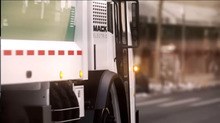
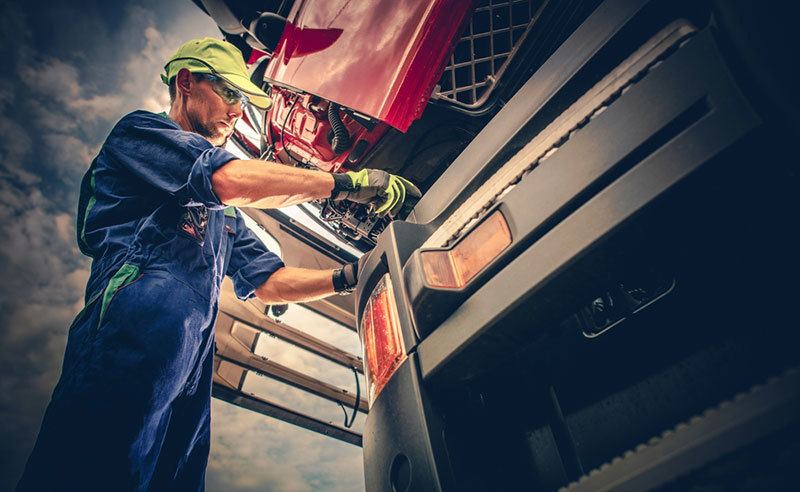
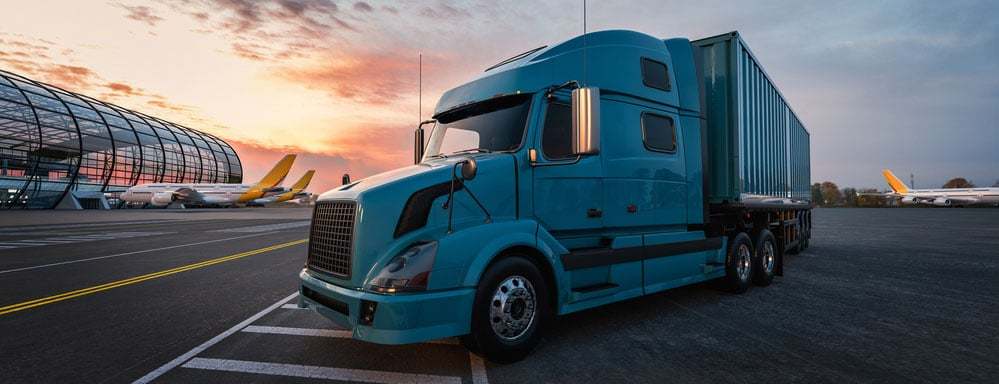 The 2020 Top Industry Issues Survey Provides Data That Benefits The Trucking Industry
The 2020 Top Industry Issues Survey Provides Data That Benefits The Trucking Industry 

